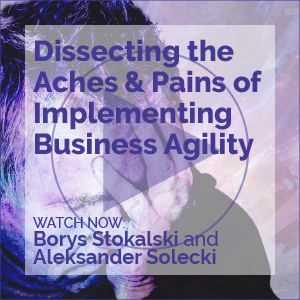Introduction to Operational Risk Management
Over the past four years, operational risk management activities have evolved from simple information gathering to a functional discipline with dedicated staff using established formal policies and procedures.
Introduction to Operational Risk Management
Over the past four years, operational risk management activities have evolved from simple information gathering to a functional discipline with dedicated staff using established formal policies and procedures.
Business Rules for Java
Readers who have read articles I have written over the course of the last decade will know that in the early 1990s I used to devote more time to rule-based techniques.
It's the Little Things that Get You
The more I'm involved in project planning meetings and project reviews, the more I see a particular problem crop up.
It's the Little Things that Get You
The more I'm involved in project planning meetings and project reviews, the more I see a particular problem crop up.
Introduction to Operational Risk Management
Over the past four years, operational risk management activities have evolved from simple information gathering to a functional discipline with dedicated staff using established formal policies and procedures.
Introduction to Operational Risk Management
Over the past four years, operational risk management activities have evolved from simple information gathering to a functional discipline with dedicated staff using established formal policies and procedures.
Introduction to Operational Risk Management
Over the past four years, operational risk management activities have evolved from simple information gathering to a functional discipline with dedicated
Introduction to Operational Risk Management
Over the past four years, operational risk management activities have evolved from simple information gathering to a functional discipline with dedicated
It's the Little Things that Get You
The more I'm involved in project planning meetings and project reviews, the more I see a particular problem crop up.
It's the Little Things that Get You
The more I'm involved in project planning meetings and project reviews, the more I see a particular problem crop up.
Involving Support Functions in IT Outsourcing
90% of Individuals Believe Software Risk Management is Important for Achieving Success
90% of Individuals Believe Software Risk Management is Important for Achieving Success
What's in an Outsourcing Project? (It's Not As Obvious As It Seems)
What's in an Outsourcing Project? (It's Not As Obvious As It Seems)
Germany's Invitation to IT Workers Gets Lukewarm Response in Poland
Germany's Invitation to IT Workers Gets Lukewarm Response in Poland
Germany's Invitation to IT Workers Gets Lukewarm Response in Poland
Germany's Invitation to IT Workers Gets Lukewarm Response in Poland
The ROI Crisis
Microsoft's DNA Components
Microsoft has a long tradition of renaming things. In the case of its component standards, they have gone from OLE and OCXs to VBXs, and from COM and ActiveXs to Microsoft Transaction Server (MTS). Now that Windows 2000 is out and COM and MTS have been combined, it's time for another name change, and apparently the new name is DNA components.
Please, Not Another Methodology Feud
I was fortunate enough to attend the Cutter Consortium Summit 2000 and, over the course of this year's Summit, I sensed an undercurrent around Extreme Programming (XP) versus more conventional, model-driven development. I don't remember the issue being specifically framed for formal discussion and debate, but it was alluded to several times.
Please, Not Another Methodology Feud
I was fortunate enough to attend the Cutter Consortium Summit 2000 and, over the course of this year's Summit, I sensed an undercurrent around Extreme Programming (XP) versus more conventional, model-driven d
Please, Not Another Methodology Feud
I was fortunate enough to attend the Cutter Consortium Summit 2000 and, over the course of this year's Summit, I sensed an undercurrent around Extreme Programming (XP) versus more conventional, model-driven d


